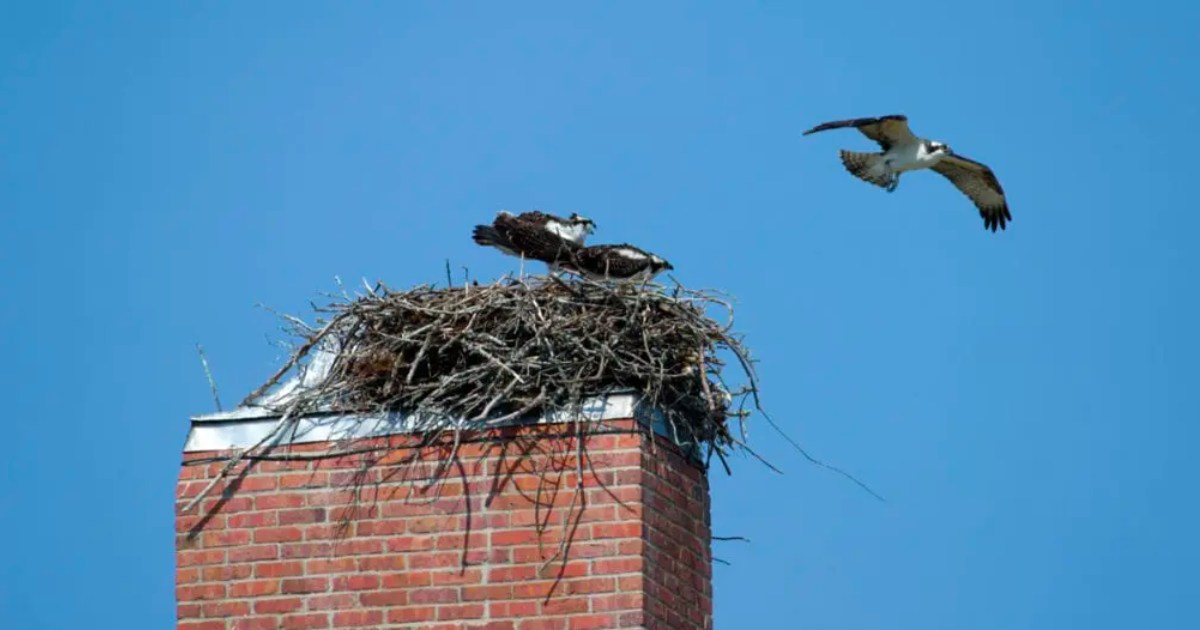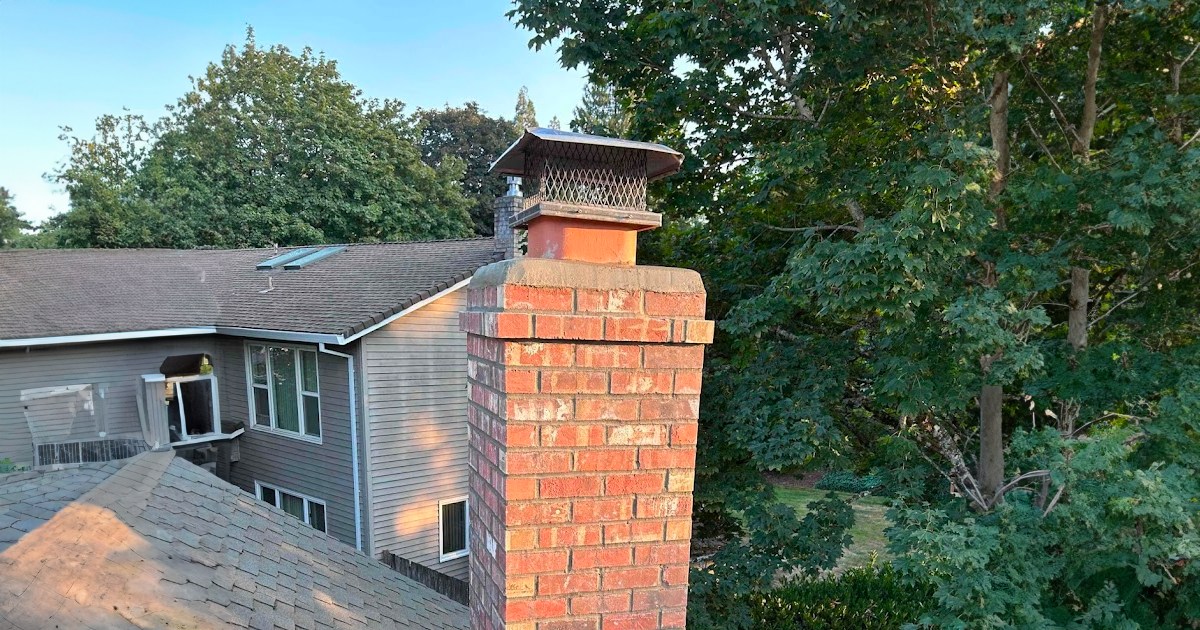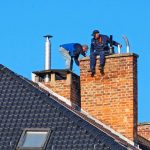Introduction
Keep your chimney in top-notch condition with regular sweeping. A clean chimney not only ensures optimal functionality, but also prevents potential safety hazards. Regular sweeping helps remove creosote buildup, leaves, debris, and other flammable materials that can cause blockages or chimney fires. Don’t underestimate the importance of chimney maintenance; it can save you money in the long run by avoiding costly repairs or replacing a damaged chimney.
At [Brand], we understand the significance of chimney care and offer expert advice on how to maintain a healthy chimney. In this article, we will guide you through the process of regular chimney sweeping and share useful tips for keeping your chimney clean and clear throughout the year. Whether you use your fireplace frequently or only occasionally, chimney sweeping is essential to ensure efficient performance and a safe living environment. So, let’s dive into the world of chimney maintenance and discover how you can easily maintain a healthy chimney for years to come.
Understanding the chimney sweeping process

Maintaining a healthy chimney is crucial for the overall safety and functionality of your home. Chimneys are designed to carry out smoke and other byproducts of combustion out of your living space. However, over time, creosote, soot, and debris can accumulate in your chimney, leading to various issues such as blockages, poor draft, and even chimney fires. Regular chimney sweeping is the best way to prevent these problems and ensure a clean and clear chimney.
Sweeping your chimney on a regular basis not only eliminates the risk of chimney fires but also improves the efficiency of your fireplace or wood-burning stove. A clean chimney allows for better airflow, which means your fire will burn more efficiently, generating more heat and reducing the amount of smoke that enters your home. Additionally, regular chimney maintenance can prolong the lifespan of your chimney, saving you from costly repairs or having to replace the entire chimney system.
So, don’t overlook the importance of chimney maintenance. By prioritizing regular chimney sweeping, you can maintain a healthy chimney and enjoy a safer, more efficient heating experience.
Signs that your chimney needs sweeping

Chimney sweeping is a crucial part of chimney maintenance, but many homeowners may not be familiar with the process. Essentially, chimney sweeping involves removing all the accumulated soot, creosote, and debris from the interior walls of the chimney. This is done using specialized chimney brushes and other tools designed for the task.
The first step in the chimney sweeping process is to ensure that the area around the fireplace or wood-burning stove is properly protected. This typically involves covering furniture, carpets, and other nearby items with drop cloths or plastic sheets. Next, a professional chimney sweep will use a long brush attached to flexible rods to clean the chimney from top to bottom. The brush is moved up and down, effectively scrubbing away the buildup on the chimney walls.
During the sweeping process, it’s important to have proper ventilation to prevent the accumulation of dust and soot in your home. The chimney sweep will also check for any signs of damage or deterioration, such as cracks in the chimney liner or mortar joints. Once the chimney has been thoroughly cleaned, the sweep will remove the protective coverings and clean up any debris or dust that may have escaped during the process.
How often should you sweep your chimney?

Regular chimney sweeping is essential, but how do you know when it’s time to schedule a sweep? While it’s recommended to have your chimney inspected and swept at least once a year, there are certain signs that indicate the need for more frequent cleaning. Here are some common signs that your chimney needs sweeping:
1. Excessive Smoke: If you notice an increase in smoke entering your home when you use your fireplace or wood-burning stove, it could be a sign of creosote buildup in the chimney. The presence of excess smoke indicates that the airflow is being restricted, and a thorough chimney sweep is necessary to remove the blockages.
2. Foul Odors: A strong, unpleasant odor coming from your fireplace or chimney is another indication of creosote or debris buildup. These materials can emit a pungent smell when they are heated, and regular sweeping is required to eliminate the odor and improve the air quality in your home.
3. Slow Burning or Difficulty Lighting a Fire: If you’re having trouble getting your fire started or notice that it takes longer for your fire to burn, it could be due to a dirty chimney. Soot and creosote can hinder the proper flow of air and prevent the fire from burning efficiently. A clean chimney will ensure better airflow and a more effective burn.
4. Visible Soot or Debris: If you can see visible soot or debris inside your fireplace or around the chimney area, it’s a clear sign that your chimney needs sweeping. The presence of soot indicates that there is a significant buildup of creosote, which can pose a fire hazard if not addressed promptly.
5. Animal Nesting: Chimneys provide an attractive nesting spot for birds, squirrels, and other animals. If you notice signs of animal activity in or around your chimney, it’s important to have it swept to remove any nesting materials or blockages that could hinder the proper functioning of your chimney.
Keep an eye out for these signs, and if you notice any of them, it’s time to schedule a chimney sweep to ensure the safety and efficiency of your chimney system.
DIY chimney sweeping vs. hiring a professional
The frequency of chimney sweeping depends on various factors, including the type of fuel you burn, the frequency of use, and the condition of your chimney. As a general rule of thumb, it’s recommended to have your chimney inspected and swept at least once a year. However, certain circumstances may require more frequent cleaning.
If you use your fireplace or wood-burning stove frequently, it’s advisable to have your chimney swept more often. The accumulation of creosote and soot can happen quickly, especially if you burn wood that is not properly seasoned or if you burn other materials that produce more residue, such as certain types of coal. In such cases, having your chimney swept every six months or even quarterly may be necessary to maintain a healthy chimney and prevent potential hazards.
Additionally, if you’ve recently experienced a chimney fire or if you’ve noticed any of the signs mentioned earlier, it’s crucial to have your chimney inspected and swept immediately, regardless of when the last cleaning was performed. Chimney fires can cause significant damage and compromise the structural integrity of your chimney, so it’s important to address any potential issues promptly.
Ultimately, the best approach is to consult with a professional chimney sweep who can assess your specific situation and provide personalized recommendations for chimney sweeping frequency. They will take into account your heating habits, the type of fuel you use, and the condition of your chimney to determine the optimal schedule for chimney maintenance.
Finding a reliable chimney sweeping service

When it comes to chimney sweeping, you may be wondering whether you can tackle the task yourself or if it’s better to hire a professional. While it’s possible to perform DIY chimney sweeping, it’s generally recommended to leave this job to the experts for several reasons.
First and foremost, chimney sweeping can be a messy and potentially hazardous task. The process involves climbing onto your roof and dealing with soot, creosote, and other debris. Professional chimney sweeps have the necessary experience, skills, and safety equipment to perform the job safely and efficiently. They are trained to handle various chimney issues and can identify potential problems that could be missed by an untrained eye.
Furthermore, professional chimney sweeps have access to specialized tools and equipment that are designed specifically for chimney sweeping. These tools allow them to thoroughly clean the chimney and remove even the most stubborn buildup. Attempting to sweep your chimney without the right tools may not yield the desired results and could potentially damage your chimney or cause injury.
Hiring a professional chimney sweep also ensures that the job is done correctly and meets industry standards. Professional sweeps follow a systematic process, taking into account safety precautions and thorough cleaning techniques. They will also conduct a comprehensive inspection of your chimney, identifying any potential issues that may require further attention.
Overall, while DIY chimney sweeping may seem like a cost-saving option, it’s generally best to invest in the services of a professional chimney sweep. They have the expertise, equipment, and knowledge to provide a thorough chimney cleaning, ensuring the safety and longevity of your chimney system.
Chimney sweeping tools and equipment
When it comes to hiring a chimney sweeping service, it’s essential to find a reliable and reputable company. Here are some tips to help you choose the right chimney sweep for your needs:
1. Research and Read Reviews: Start by researching local chimney sweeping companies in your area. Check their websites, read customer reviews, and look for testimonials. A reputable chimney sweep will have positive reviews and a track record of providing excellent service.
2. Certification and Credentials: Look for chimney sweeps who are certified by professional organizations such as the Chimney Safety Institute of America (CSIA) or the National Chimney Sweep Guild (NCSG). These certifications ensure that the chimney sweep has undergone proper training and adheres to industry standards.
3. Insurance and Licensing: Verify that the chimney sweeping company is fully insured and licensed. This protects you in case of any accidents or damage that may occur during the service.
4. Ask for References: Don’t hesitate to ask the chimney sweep for references from previous customers. Contact these references to get an idea of their experience with the company and the quality of their work.
5. Get Multiple Estimates: Before making a final decision, obtain estimates from multiple chimney sweeps. Compare their prices, services offered, and the scope of work included in their estimates. Be wary of extremely low prices, as they may indicate subpar service.
By following these guidelines, you can find a reliable chimney sweeping service that will ensure your chimney is cleaned thoroughly and professionally.
Common chimney issues and how sweeping can prevent them
To perform a chimney sweep effectively, professionals rely on a range of specialized tools and equipment. Here are some of the essential tools used during the chimney sweeping process:
1. Chimney Brushes: Chimney brushes come in different sizes and shapes, depending on the type and size of your chimney. They are designed to remove soot, creosote, and debris from the chimney walls. Chimney brushes feature sturdy bristles that can effectively scrub away buildup.
2. Rods: Flexible rods are used to attach the chimney brush and extend its reach inside the chimney. These rods allow the chimney sweep to navigate the entire length of the chimney, ensuring a thorough cleaning.
3. Vacuum Cleaners: Powerful vacuum cleaners with HEPA filters are used to capture and contain the soot and debris that is dislodged during the sweeping process. This prevents the dust from spreading throughout your home.
4. Drop Cloths and Protective Coverings: Before the chimney sweeping begins, professionals will cover the surrounding area with drop cloths or plastic sheets to protect your furniture, carpets, and other belongings from dust and debris.
5. Inspection Tools: In addition to the sweeping tools, chimney sweeps also use various inspection tools, such as cameras and mirrors, to examine the interior of the chimney and identify any potential issues or damage.
These are just a few examples of the tools and equipment used during chimney sweeping. Professional chimney sweeps are equipped with the necessary tools to ensure a thorough cleaning and inspection of your chimney system.
Chimney sweeping safety precautions
Regular chimney sweeping not only removes soot and debris, but it also helps prevent common chimney issues. Here are some of the problems that can be avoided through regular chimney maintenance:
1. Creosote Buildup: Creosote is a black, tar-like substance that forms when wood or other organic materials are burned. Over time, creosote can accumulate on the walls of your chimney, posing a fire hazard. Regular chimney sweeping removes the creosote buildup, reducing the risk of chimney fires.
2. Blockages: Leaves, twigs, bird nests, and other debris can obstruct your chimney, preventing proper ventilation and airflow. This can lead to poor draft, smoke backdraft, and even carbon monoxide buildup. Chimney sweeping clears any blockages, ensuring that your chimney operates efficiently and safely.
3. Cracks and Damage: Chimneys are exposed to extreme temperatures, weather conditions, and shifting foundations, which can cause cracks and other forms of damage. Regular sweeping allows for the early detection of any cracks or deterioration, preventing further damage and costly repairs.
4. Animal Infestation: Chimneys provide a cozy and protected space for birds, squirrels, raccoons, and other animals to build nests. These nests can block the chimney and create fire hazards. Regular chimney sweeping eliminates any nesting materials and discourages animals from inhabiting your chimney.
By regularly scheduling chimney sweeps, you can address these common issues before they escalate into more significant problems. Preventive maintenance is the key to keeping your chimney in optimal condition and avoiding costly repairs or replacements.
Conclusion: Benefits of regular chimney sweeping and maintenance
While chimney sweeping is essential for maintaining a healthy chimney, it’s important to prioritize safety during the process. Here are some safety precautions to keep in mind:
1. Hire a Professional: As mentioned earlier, hiring a professional chimney sweep is the safest option. They have the expertise and equipment to perform the job safely and efficiently.
2. Use Protective Gear: If you decide to perform DIY chimney sweeping, be sure to wear protective gear, including goggles, gloves, a dust mask, and appropriate clothing. This will protect you from soot, debris, and potential respiratory irritants.
3. Ensure Proper Ventilation: Open windows and doors to ensure proper ventilation during the chimney sweeping process. This will help minimize the buildup of dust and soot in your home and promote better air quality.
4. Install Carbon Monoxide Detectors: Carbon monoxide is a colorless, odorless gas that can be produced by a blocked or malfunctioning chimney. Install carbon monoxide detectors in your home to alert you of any potential leaks or buildup.
5. Keep Children and Pets Away: During chimney sweeping, keep children and pets away from the area to prevent accidents or injuries. The tools and equipment used during the process can be hazardous if not handled properly.
By following these safety precautions, you can ensure a safe and efficient chimney sweeping experience.

